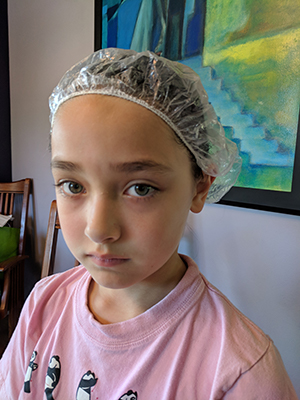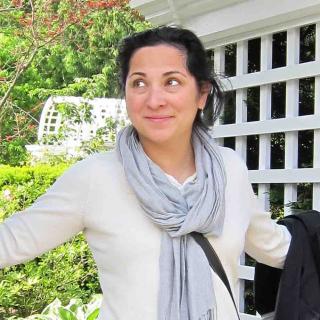
It all started as a normal visit to a kids’ haircut salon. I’d landed simultaneous appointments for my two children so I could savor my cappuccino in peace. But halfway through the appointment, my daughter’s stylist stopped cutting and said, “Can you come over here?”
She pointed to something that looked like a grain of brown rice on my daughter’s scalp.
“That,” she said with an ominous tone, “is lice.”
A Facebook post from two weeks prior flashed through my mind: There’d been a lice outbreak at school right before summer break.
“We have to end the haircut now,” the stylist said as she squished the louse in a tissue before tying up my daughter’s wet hair in a ponytail.
My daughter started to panic, itching her head compulsively. I took a breath.
“What, what do we do?” I stammered.
The stylist pointed toward some lice kits on a shelf. For more money, she said, we could enlist a lice treatment service. I was mortified. We quickly paid and hustled out the door.
Immediately, I searched for “lice services” on my phone. I found a few specialized salons in Seattle but I wanted as much guidance as possible.
We ended up calling The Lice Clinic because the technician would come to our house because treating hair is one thing. Undertaking lice eradication on all hair accessories, bedding, soft furniture, stuffed animals and clothing is entirely another.
I didn’t want to miss anything or clean incorrectly but frankly, I wanted the moral support.
A first time for everything
Believe it or not, this was the first time in nine years of motherhood that I had encountered lice.
Despite occasional lice warnings over the years in preschool and elementary classes, we’d managed to avoid these bugs completely. That gave me a false confidence that we were doing something effective (nope) and that we didn’t have conditions in which lice could prosper (nope again).

While my daughter received her hair treatment — a 40-minute precision comb-through of hair soaked in a proprietary oil mixture while she watched a movie on my laptop — the Lice Clinic technician told me what items needed to go in the wash vs. quarantine. I flung myself around the house, bagging stuffed animals, spreading sheets over couches and running the washing machine nonstop.
And wouldn’t you know it? I ended up having lice, too.
Sharing the news
Since I document everything, I took pictures of my daughter and myself during our treatments. Her sad, sullen face says it all. Setting aside my own insecurities in an effort to embrace the moment, I shared the photos on Facebook as a way to show my kids that we needn’t be ashamed.
What I didn’t expect were so many admissions of lice infestations from fellow parent friends — 15 to be exact! Good friends, close friends, had been through this same thing — some recently and others multiple times — and none had said anything.
When I mentioned this to our lice technician at the seven-day follow-up appointment, she wasn’t surprised. Lice, she explained, are a lot more common than you might think (the CDC estimates 6 to 12 MILLION “infestations” occur annually among U.S. kids 3 to 11 years old).
More importantly I realize lice aren’t an indicator of uncleanliness. Rather, they’re a natural part of life because kids share things even when you tell them not to, like hats, combs, clothing and personal space.
Also good to know: Lice don’t carry diseases like ticks or mosquitos do and they can’t survive for more than 48 hours without a host.
This experience cleared away some old assumptions and changed my perspective for the better. Now we know: Lice happens to a lot of people — all the time — and getting them isn't scandal-worthy.
We’re even heading back to the same kids’ haircut salon next week with heads held high — but no lice on them this time.











